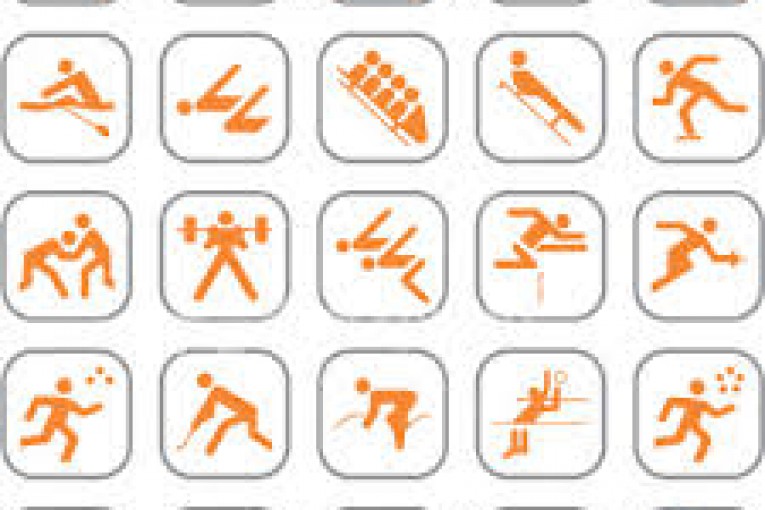
Research suggests that musculoskeletal pain is more common now than it was 40 years ago. One of the primary causes of muscular dysfunction is attributable to physical inactivity.
Low-Back Pain
Low-back pain is a primary cause of musculoskeletal degeneration seen in the adult population, affecting nearly 80% of all adults. Research has shown low-back pain to be predominant among workers in enclosed workspaces (such as offices), as well as people engaged in manual labor (farming). Low-back pain is also seen in people who sit for periods of time greater than 3 hours and in individuals who have altered lumbar lordosis (curve in the lumbar spine).
Knee Injuries
An estimated 80,000 to 100,000 anterior cruciate ligament (ACL) injuries occur annually in the general US population. Approximately 70% of these are noncontact injuries. In addition, ACL injuries have a strong correlation to acquiring arthritis in the affected knee. Most ACL injuries occur between 15 and 25 years of age . This comes as no surprise when considering the lack of activity and increased obesity occurring in this age group. US teenagers have an abundance of automation and technology, combined with a lack of mandatory physical education in schools. Fortunately, research suggests that enhancing neuromuscular stabilization (or body control) may alleviate the high incidence of noncontact injuries.
Musculoskeletal Injuries
In 2003, musculoskeletal symptoms were the number two reason for physician visits. Approximately 31 million visits were made to physicians’ offices because of back problems in 2003, including more than 10 million visits for low-back problems. Approximately 19 million visits in 2003 were made because of knee problems, 14 million for shoulder problems, and 11 million for foot and ankle problems. Unnatural posture, caused by improper sitting, results in increased neck, mid- and lower back, shoulder, and leg pain. Of work-related injuries, more than 40% are sprains (injured ligaments) and strains (injured tendons or muscles). More than one third of all work-related injuries involve the trunk, and of these, more than 60% involve the low back. These work-related injuries cost workers approximately 9 days per back episode or, combined, more than 39 million days of restricted activity. The monetary value of lost work time as a result of these musculoskeletal injuries was estimated to be approximately $120 billion. Exercise training programs need to address all of the components of health-related physical fitness using safe and effective training principles. Unfortunately, many training programs and fi tness equipment used to condition the musculoskeletal system are often based on unsound training principles and guidelines. Vital to safe and effective exercise training programs is to train essential areas of the body, such as the stabilizing muscles of the hips, upper and lower back, and neck, and to use a proper progression of acute variables (i.e., sets, repetitions, and rest periods). The extent to which exercise training programs develop the musculoskeletal system is directly infl uenced by the potential risk of injury. The less conditioned our musculoskeletal systems are, the higher the risk of injury.
1. Harkness EF, Macfarlane GJ, Silman AJ, McBeth J. Is musculoskeletal pain more common now than 40 years ago? Two population-based cross-sectional studies. Rheumatology (Oxford) 2005;44(7):890–5.
2. Walker BF, Muller R, Grant WD. Low back pain in Australian adults: prevalence and associated disability. J Manipulative Physiol Ther 2004;27(4):238–44.
3. Cassidy JD, Carroll LJ, Cote P. The Saskatchewan Health and Back Pain Survey. The prevalence of low back pain and related disability in Saskatchewan adults. Spine 1998;23(17):1860–6.
4. Volinn E. The epidemiology of low back pain in the rest of the world. A review of surveys in low- and middle-income countries. Spine 1997;22(15):1747–54.
5. Omokhodion FO, Sanya AO. Risk factors for low back pain among offi ce workers in Ibadan, Southwest Nigeria. Occup Med (Lond) 2003;53(4):287–9.
6. Omokhodion FO. Low back pain in a rural community in South West Nigeria. West Afr J Med 2002;21(2):87–90.
7. Tsuji T, Matsuyama Y, Sato K, Hasegawa Y, Yimin Y, Iwata H. Epidemiology of low back pain in the elderly: correlation with lumbar lordosis. J Orthop Sci 2001;6(4):307–11.
8. Griffi n LY, Agel J, Albohm MJ, et al. Noncontact anterior cruciate ligament injuries: risk factors and prevention strategies. J Am Acad Orthop Surg 2000;8(3):141–50.
9. Hill CL, Seo GS, Gale D, Totterman S, Gale ME, Felson DT. Cruciate ligament integrity in osteoarthritis of the knee. Arthritis Rheum 2005;52:3:794–9.
10. Mandelbaum BR, Silvers HJ, Watanabe DS, et al. Effectiveness of a neuromuscular and proprioceptive training program in preventing anterior cruciate ligament injuries in female athletes: 2-year follow-up. Am J Sports Med 2005;33(7):1003–10.
11. Centers for Disease Control and Prevention. Ambulatory care visits to physician offi ces, hospital outpatient departments, and emergency departments: United States, 2001–02. Vital Health Stat 13 2006;13(159):3–8. https://www.cdc.gov/nchs/data/series/ sr_13/sr13_159.pdf. Accessed February 8, 2006.
12. Bureau of Labor Statistics. 2005 Dec 15. Workplace injuries and illnesses in 2004. News release. https://www.bls.gov/iif/home.htm.
13. Barr KP, Griggs M, Cadby T. Lumbar stabilization: core concepts and current literature, Part 1. Am J Phys Med Rehabil 2005;84(6):473–80

© 2la.it - Riproduzione riservata.



